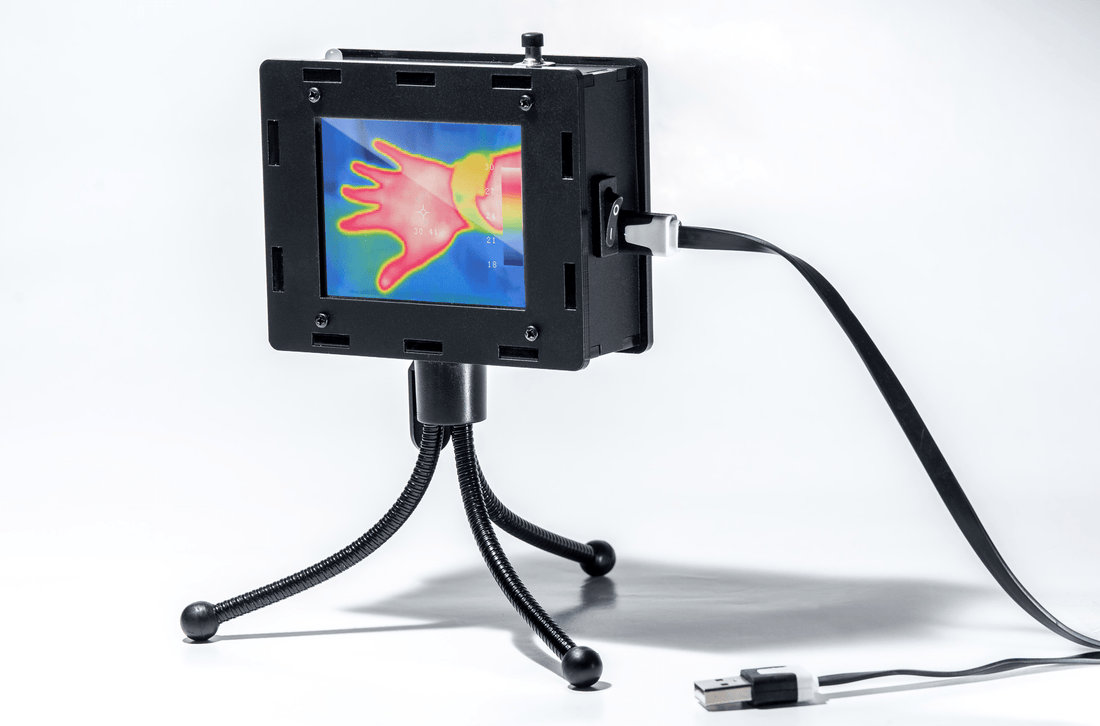
DIY-Thermocam Designed by GroupGets User
Max Ritter, a young and talented GroupGets user and thermal imaging fan, created this awesome open-source do-it-yourself thermographic camera, a.k.a. the DIY-Thermocam. One of the components of the kit is our own custom FLIR Lepton breakout board and we are thrilled to see it find a good new home in a feature-rich product.

Max's goal of this project was to make thermal imaging available to everyone. He wants to give small companies, educational institutes, and regular people access to this portable and low-cost platform. What an amazing mission for such useful technology. We love seeing what our customers come up with!

Max, a 23-year-old achieving a Master's Degree in Embedded Systems at the University of Applied Sciences Pforzheim in Germany, became interested in the project five years ago for a German science competition called "Jugend Forscht". Max and a friend won a prize at the competition by building a device out of steel, stepper motors and an Arduino. It interfaced with a single point IR sensor by creating a thermal image when moving the thermal sensor over an area. "The machine was very heavy, but it worked!" said Max.

Max's build-your-own thermal camera was recently featured on Hackaday. "The DIY Thermocam improves on his previous designs by capturing 60 by 80 pixel thermal images, which can be combined with visible light images from an accompanying 640 by 480 pixel camera to produce the final image," reports Richard Baguley from Hackaday. The device is centered around the FLIR Lepton module, but Max also added a battery and sleek wide angle touch display with color.

There are various applications for this kit like finding heat leaks in the insulation of buildings including windows, the analysis of electric or mechanical components, the detection of persons or animals and many more. Part of the reward is building it yourself and the other part will be adding your own features and upgrades which hopefully you'll share with us.
We think that this is just the beginning for miniaturized thermal imaging applications and Max's kit will give developers a big head start.
The firmware is Arduino compatible C++ and can be used standalone or modified at will.

The DIY-Thermocam kit has almost one-hundred components and since it uses the classic Lepton breakout board, it can accommodate all current and upcoming versions of Lepton.
And what's the next project for Max? He said he wishes to finish a prototype of the Full-Spectrum-Camera. It is based on Raspberry Pi and has four different cameras to cover wide-spectral-information: UV, RGB, Near-Infrared and Long-Wave-Infrared. The software was written in Python and displayed on a LCD touch screen. His plan is to offer the Full-Spectrum-Camera it as a do-it-yourself kit, just like the DIY-Thermocam.
We can't wait to see it! More information is available at DIY-Thermocam.net.
